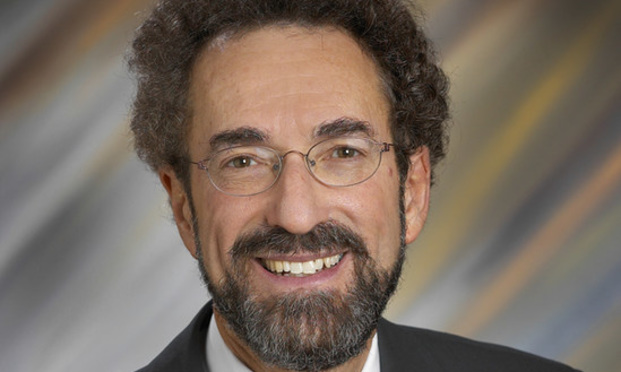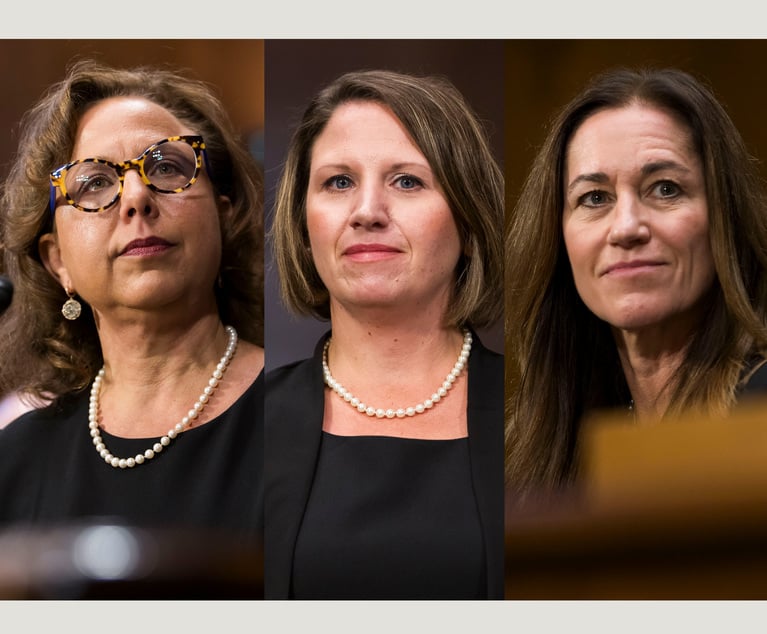Report: Med Mal Claims Have Little Affect on Available Health Care in Pa.
The question is, whether doctors and hospitals should continue to receive this special treatment or whether they should be treated like any other person or entity that can be sued wherever they are found doing business on a regular and substantial basis?
February 27, 2020 at 12:05 PM
8 minute read
 Cliff Rieder
Cliff Rieder
The Legislative Budget and Finance Committee, a joint committee of the Pennsylvania General Assembly, just issued its blockbuster, almost 150-page report, "A Study of the Impact of Venue for Medical Professional Liability Actions." The report was an effort of both parties that are in the entirety of the legislature.
In 2003, the Pennsylvania Supreme Court issued a rule requiring that doctors and hospitals who are sued for malpractice must be sued in the county where the malpractice occurred, regardless of where they are found doing business. The question is whether doctors and hospitals should continue to receive this special treatment or whether they should be treated like any other person or entity that can be sued wherever they are found doing business on a regular and substantial basis.
The report looked comprehensively at medical health care in Pennsylvania and how the quality of care, the number of doctors and the costs of insurance are affected by creating burdens and hurdles to patients who bring legitimate medical malpractice claims. The definitive report overwhelmingly concluded that viewing all the available data from 1996 to 2018, there was a decrease in medical malpractice filings. Among the five states with the highest medical malpractice payouts, Pennsylvania had the second lowest percentage (12.1%) of increase in total payout costs per capita between 1996 and 2018.
The study determined that the effects of the proposed rule change concerning where medical malpractice cases are brought on the number of medical malpractice filings or the value of medical malpractice payouts in Pennsylvania "could not be determined with any certainty. Due to the multiple variables involved in medical malpractice cases, we could not isolate the effect, if any, the proposed rule change to venue would have on the proper determination of, and fair compensation for injuries as a result of medical negligence by a health care provider."
In other words, the fears that treating doctors and hospitals like any other individual or company in the state would somehow decrease the availability of doctors or increase the cost of health care are not true. The data that the study looked at is completely convincing.
In sum, the study found as follows:
- The available data does not support a conclusion that changes in the availability, cost and affordability of medical professional liability insurance are the result of changes in Pennsylvania law. The changes may be the result of national trends.
- The availability of medical professional liability insurance has increased since 2002.
- The cost of medical professional liability insurance increased dramatically from 1996 through 2007 before declining. This change also appears closely aligned to a national trend.
- Since 2007, the cost of medical professional liability insurance decreased. This also is demonstrative of a national trend.
It is clear that with or without hurdles to patients bringing legitimate medical liability claims in Pennsylvania, the number of physicians and extenders has grown steadily ever since the keeping of records. Claims that physicians are leaving the state or have left the state due to medical malpractice cases are now shown to be a total fraud. Pennsylvania's statewide total of medical staff with clinical privileges per 10,000 residents has increased at the same rate from 1996 through 2018. In fact, before so-called "tort reform," the rate of physician increase was actually somewhat greater.
There has never been, since the beginning of recordkeeping in 1996, a drop in the total act of medical staff with clinical privileges per 10,000 residents except in an occasional year. The report did not deal with records of the number of doctors prior to 1996, but the trend has been consistent since the early 1970s.
Obstetricians and gynecological physicians are often claimed to be those who benefit from obstacles to bringing legitimate medical malpractice cases. The report stated that while Pennsylvania's population increased steadily, the number of females of child-bearing age declined. The trend of an increase in total population versus a decrease in females of child-bearing age is significant in connection with the number of OB/GYNs required to provide care.
The report looked at medical services by specialty and again found an extraordinarily consistent number of doctors and health care providers in the state regardless of the imposition of barriers to bringing legitimate claims. The rise of large health care systems and significant changes in the health insurance market have affected the number of doctors and the cost of health care. The number of hospitals in the United States between 1999 and 2016 has grown every year except for one, 2007, when the United States was in a major recession.
One cannot read this report without concluding that trends concerning health care and the availability of health care have nothing to do with legitimate claims for compensation, which are a very tiny cost of the national health care bill, but rather are affected by health insurance trends, the cost of surgical and pharmaceutical procedures and fluctuation in interest rates. The problem in health care is not caused by patients who have suffered malpractice, but rather from innate characteristics of the health care system that traditionally has emphasized profits over patients.
Section IV of the report, "Determination and Compensation for Injuries and Death Resulting From Medical Negligence by Health Care Providers," concluded that "the available data does not support a conclusion on the affect the change of venue would have on the prompt determination of actions and fair compensation for injuries." In other words, there is no reason not to treat doctors and hospitals like anyone else and subject them to jurisdiction wherever they are found doing business on a regular basis.
The number of medical malpractice filings in Pennsylvania has declined precipitously from 2000 until 2007, and has been steady between 2009 and 2017. The report also looked at each county in Pennsylvania to determine whether there were increases or decreases in the number of filings, as well as payouts.
Exhibit 38 of the report, on page 84, demonstrates that jury verdicts are usually in favor of the doctors and hospitals. Throughout the state, doctors and hospitals win between 55% and 85% of the time. The plaintiff rates of success concomitantly are between 15% and 45%, depending upon the county.
Patients who suffer injuries and file legitimate claims are not breaking the bank or bankrupting doctors or hospitals anywhere in the state. As a result of misconceptions by people who serve on juries, it appears that patients are not being compensated as they should be when legitimate medical malpractice claims are filed.
The report therefore concluded on page 107 that the number of medical malpractice filings and number of jury awards have decreased since 2003. "However, the available data does not support a conclusion on the effect of venue on changes in the number of filings and jury awards." Interestingly and very importantly to those interested in health care, the national practitioner databank (NPDB) showed that the severity of payments made on behalf of MDs and DOs in Pennsylvania and nationwide from 1996 to 2018 has increased, while the number (count) of payments has decreased. The claims are more serious, but are fewer in numbers.
No section of the report found that any of the available data support a conclusion that changes in health care or insurance have anything to do with where the claims are brought in Pennsylvania. National trends, including the profit motive of insurance companies, interest rates and errors themselves, have more to do with claims and claims payouts than any other factor.
From the time that serious hurdles and burdens to bringing legitimate medical malpractice cases was established in 2003, insurance rates for counties in Pennsylvania dramatically increased and stayed high. In other words, making more difficult for patients to sue in legitimate cases was a financial bonanza for the insurance industry. They took advantage of the difficulty patients had in bringing cases to raise rates. That is shown on Exhibit 2, page 142, Exhibit 73, page 143, and the like. In the high-risk specialties such as OB/GYN, the insurance companies dramatically jacked up their rates after restrictions on lawsuits and those rates have been kept high.
The only ones who have benefited by making it more difficult for patients to receive fair compensation are the pocketbooks of insurance companies. The report on the availability of insurance and health care in Pennsylvania will stand as a landmark against the false claims hurled at those who bring legitimate medical liability cases.
Cliff Rieders, of Rieders, Travis, Humphrey, Waters, & Dorhmann, is a board-certified trial advocate in Williamsport, past president of the Pennsylvania Trial Lawyers Association and a past member of the Pennsylvania Patient Safety Authority. Contact him at [email protected].
This content has been archived. It is available through our partners, LexisNexis® and Bloomberg Law.
To view this content, please continue to their sites.
Not a Lexis Subscriber?
Subscribe Now
Not a Bloomberg Law Subscriber?
Subscribe Now
NOT FOR REPRINT
© 2025 ALM Global, LLC, All Rights Reserved. Request academic re-use from www.copyright.com. All other uses, submit a request to [email protected]. For more information visit Asset & Logo Licensing.
You Might Like
View All
Pa. Federal District Courts Reach Full Complement Following Latest Confirmation

The Defense Bar Is Feeling the Strain: Busy Med Mal Trial Schedules Might Be Phila.'s 'New Normal'
7 minute read
Federal Judge Allows Elderly Woman's Consumer Protection Suit to Proceed Against Citizens Bank
5 minute read
Judge Leaves Statute of Limitations Question in Injury Crash Suit for a Jury
4 minute readTrending Stories
Who Got The Work
J. Brugh Lower of Gibbons has entered an appearance for industrial equipment supplier Devco Corporation in a pending trademark infringement lawsuit. The suit, accusing the defendant of selling knock-off Graco products, was filed Dec. 18 in New Jersey District Court by Rivkin Radler on behalf of Graco Inc. and Graco Minnesota. The case, assigned to U.S. District Judge Zahid N. Quraishi, is 3:24-cv-11294, Graco Inc. et al v. Devco Corporation.
Who Got The Work
Rebecca Maller-Stein and Kent A. Yalowitz of Arnold & Porter Kaye Scholer have entered their appearances for Hanaco Venture Capital and its executives, Lior Prosor and David Frankel, in a pending securities lawsuit. The action, filed on Dec. 24 in New York Southern District Court by Zell, Aron & Co. on behalf of Goldeneye Advisors, accuses the defendants of negligently and fraudulently managing the plaintiff's $1 million investment. The case, assigned to U.S. District Judge Vernon S. Broderick, is 1:24-cv-09918, Goldeneye Advisors, LLC v. Hanaco Venture Capital, Ltd. et al.
Who Got The Work
Attorneys from A&O Shearman has stepped in as defense counsel for Toronto-Dominion Bank and other defendants in a pending securities class action. The suit, filed Dec. 11 in New York Southern District Court by Bleichmar Fonti & Auld, accuses the defendants of concealing the bank's 'pervasive' deficiencies in regards to its compliance with the Bank Secrecy Act and the quality of its anti-money laundering controls. The case, assigned to U.S. District Judge Arun Subramanian, is 1:24-cv-09445, Gonzalez v. The Toronto-Dominion Bank et al.
Who Got The Work
Crown Castle International, a Pennsylvania company providing shared communications infrastructure, has turned to Luke D. Wolf of Gordon Rees Scully Mansukhani to fend off a pending breach-of-contract lawsuit. The court action, filed Nov. 25 in Michigan Eastern District Court by Hooper Hathaway PC on behalf of The Town Residences LLC, accuses Crown Castle of failing to transfer approximately $30,000 in utility payments from T-Mobile in breach of a roof-top lease and assignment agreement. The case, assigned to U.S. District Judge Susan K. Declercq, is 2:24-cv-13131, The Town Residences LLC v. T-Mobile US, Inc. et al.
Who Got The Work
Wilfred P. Coronato and Daniel M. Schwartz of McCarter & English have stepped in as defense counsel to Electrolux Home Products Inc. in a pending product liability lawsuit. The court action, filed Nov. 26 in New York Eastern District Court by Poulos Lopiccolo PC and Nagel Rice LLP on behalf of David Stern, alleges that the defendant's refrigerators’ drawers and shelving repeatedly break and fall apart within months after purchase. The case, assigned to U.S. District Judge Joan M. Azrack, is 2:24-cv-08204, Stern v. Electrolux Home Products, Inc.
Featured Firms
Law Offices of Gary Martin Hays & Associates, P.C.
(470) 294-1674
Law Offices of Mark E. Salomone
(857) 444-6468
Smith & Hassler
(713) 739-1250





